
All categories
Featured selections
Trade Assurance
Buyer Central
Help Center
Get the app
Become a supplier

(16180 products available)







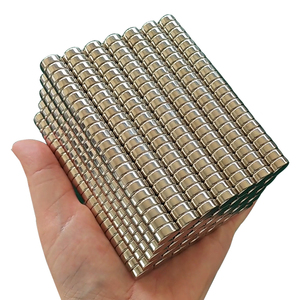







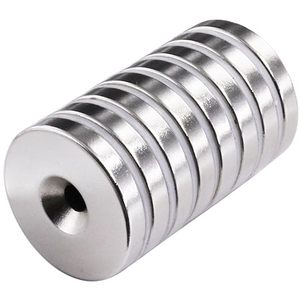
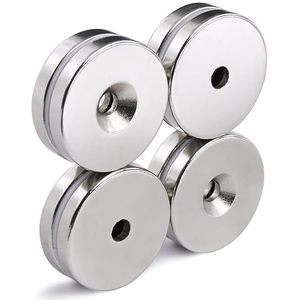


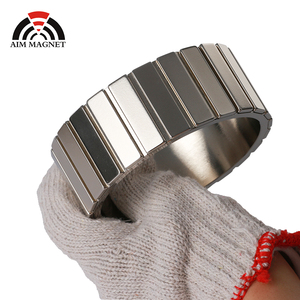

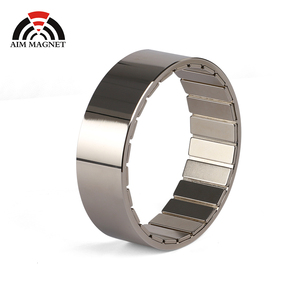
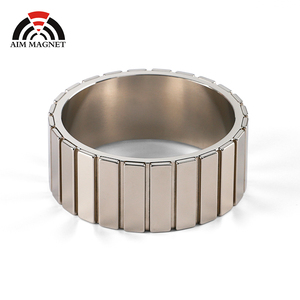
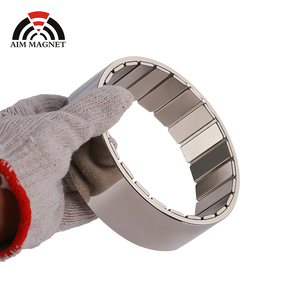


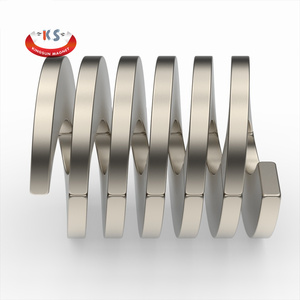
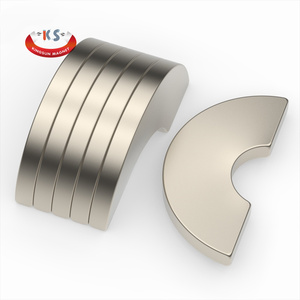











Neodymium arc magnets come in different types, each suitable for specific applications. Their strength and shape make them essential components in various industries.
Segmented Magnets
Segmented arc magnets have a pie-shaped segment removed from their structure. This feature makes them ideal for electric motors. When combined, segmented magnets increase torque in the magnetic field, which helps to run motors and generators. In this case, they allow for better performance at low and high speeds. Due to these functionalities, they are widely used in high-performance applications, including hybrid and electric vehicles.
Partial Arc Magnets
Partial arc magnets are smaller arcs cut from a full arc magnet. These magnets are used where less magnetic power is needed. They still offer strong, focused magnets for smaller devices. In this case, they are used in systems that don't need as much magnetic field strength.
Full Arc Magnets
Full arc magnets are the complete semi-circle shapes of arc magnets. They provide a uniform magnetic field strength. Moreover, they are used in applications that require constant magnetic power. Companies use full arc magnets in systems where equal output is necessary. These systems typically include motors, generators, or magnetic couplings.
Horseshoe Magnets
Horseshoe-shaped arc magnets connect the two poles. An example is a radial assembly in motors or magnetic couplings. Their design completes the magnetic circuit. The magnets are also compact. Companies also prefer these magnets for limited spaces. In addition, they are widely used in magnetic separation systems.
Coated Magnets
Coated arc magnets have a layer of material to protect from corrosion. Nickel, gold, or rubber often coat these magnets. The purpose of the coating is to prevent wear and tear on the magnets. This extended lifespan is especially important in corrosive environments. Typically, electroplating or other durable coatings are used. These are then seen in wind turbines where long-lasting functionality is key.
Neodymium magnets possess unique features that retailers must consider when purchasing these products in bulk. Below are some of their most notable features:
High Magnetic Strength
Compared to other types, NdFeB arc magnets have a very high magnetic strength. This is the case even when they are small in size. The reason for this is that they have a high magnetic energy density. This density makes them ideal in various applications. These applications typically include electric motors, generators, and magnetic couplings. In these applications, high performance is usually required.
Corrosion Resistance
These magnets are prone to corrosion since neodymium is made of iron and steel. Usually, they are protected by nickel plating, gold, or epoxy coats. These coatings are essential for extending the lifespan of the magnets. This is particularly seen in corrosive environments, including marine or industrial settings.
Diversified Shapes and Sizes
Neodymium magnets come in different shapes and sizes. Common ones include blocks, cylinders, discs, rings, and arc magnets. Each shape has its own unique usage in different applications. For instance, arc magnets, with their curved shape, are suitable for electric motors and generators. This is because they mimic the rotor design. On the other hand, ring magnets make effective magnetic fields in mechanical devices.
Temperature Sensitivity
Neodymium magnets lose their magnetism when exposed to high temperatures above 80°C. This poses a risk to their magnetic strength. This usually makes it critical for several manufacturers to incorporate protective coatings. This prevents the magnets from coming into contact with heat sources.
Easy Assembly
These magnets can easily be installed in various systems. Most of them use adhesive to fix the magnets into place. Some of the ultra-strong ones can be put back into position by fitting a key or clamp. This makes them easy to integrate into existing systems during retrofitting or repairs.
Neodymium arc magnets have a wide variety of uses, as outlined below:
Electric Motors
Usually, these magnets are used for the rotor in electric motors. In this case, they create strong magnetic fields in order to power the motor. Moreover, they enhance efficiency and performance in applications like electric vehicles and industrial machinery. This is important, as electric motors require strong magnets for effective performance.
Generators
Often, NdFeB magnets are used in the rotor of electric generators. They convert mechanical energy into electrical energy. This happens when the rotor spins within magnetic fields. The magnets, therefore, play a critical role in renewable energy systems. This includes wind turbines and hydroelectric generators.
Magnetic Couplings
Often, Neodymium arc magnets provide contactless power transfer in magnetic couplings. The magnets transmit torque between two shafts while allowing for misalignment or separation. This feature makes them suitable for pump and mixer applications. In these applications, mechanical seals or leaks have to be avoided.
Hold and Lift Systems
These magnets are then used in magnetic separation, which is common in manufacturing and recycling industries. Here, they help lift metal objects like iron and steel from equipment or conveyor belts. This helps improve efficiency and reduce manual labor in the operations. Besides saving time and cost, magnetic separation enables workers to operate in safer environments.
Medical Devices
Magnetic resonance imaging (MRI) machines also utilize these powerful magnets. Usually, their strong magnetic fields produce detailed images of internal body structures. As a result, they help provide non-invasive medical diagnostics. This offers valuable insights into patients' health.
To select neodymium magnets, one has to consider various factors to ensure the right magnets are acquired for different clients' needs. One should bear the following factors in mind:
Shape and Size
The specific application determines the size and shape of the arc magnets required. For instance, electric motors and generators often need large magnets with a strong holding force. Applications like DIY projects require small magnets. Small magnets also take limited space, so they are more suitable. One should ensure that the magnets purchased fit the clients' intended uses precisely.
Coating
Neodymium magnets have to be coated to prevent corrosion, especially in areas with high humidity or extreme temperatures. Epoxy or nickel coatings protect the magnets and increase their lifespan. In this case, selecting one with the right coating based on the environment in which the magnets will be used is essential.
Temperature Resistance
In high-heat regions, neodymium magnets can demagnetize, reducing their holding force. This calls for selecting magnets that can withstand extreme temperatures. Alternatively, one could go for coated magnets, which have better thermal resistance. These options would ensure that the magnets maintain their effectiveness in extreme conditions.
Magnet Grade
Magnet grade refers to the strength of the neodymium used in a magnet. The higher the grade number, the stronger the magnet. Normally, GD indicates the magnetic energy product measured in MGOe. Generally, more potent magnets have higher numbers.
Field Strength
The arc's curvature, width, and angle determine the strength of its magnetic field. For example, a wider magnet will be stronger than a narrow one. Stronger magnets are ideal for larger clients' applications. However, they are harder to control and install.
No. Normally, they retain their strength for many years. But, when exposed to high temperatures, they can demagnetize. Corrosive environments weaken them as well. So, proper coating and environmental control are essential for maximizing lifespan.
Usually, they are protected with nickel, gold, or epoxy coats. These coatings reduce the risk of oxidation and corrosion. In addition, storing magnets in pairs or using keeper bars helps preserve their magnetic fields. In this case, storing them in low-humidity, cool, and dark areas away from heat sources will also help.
Usually, neodymium arc magnets are not eco-friendly. This is because the mining process of neodymium and rare earth elements causes environmental degradation. Often, the magnets' strength leads to reduced material usage. This minimizes their carbon footprint in industrial applications.
The epoxy coat provides a layer of electrical insulation and prevents corrosion. This makes the magnets suitable for use in MRI machines and wind turbines. Here, they are exposed to harsh environments where corrosion is likely to occur.
Rarely are neodymium magnets harmful. On rare occasions, prolonged exposure to magnetic fields may affect individuals with pace makers or electronic medical implants. More often than not, the magnets are safely managed in industrial environments to avoid potential hazards.